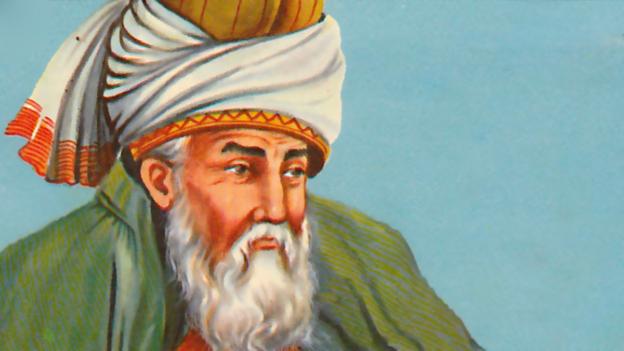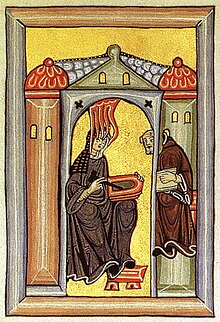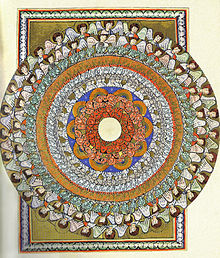3. 《美國的社會》THE AMERICAN SOCIETY, EDITED BY KENNETH S. LYNN, 香港今日世界出版社 1965
4.
5.《美國人的性格與文化》WHY WE BEHAVE LIKE AMERICANS BY BRADFORD SMITH 香港今日世界出版社, 1964
紐約《先鋒論壇報》記載他的生平,有這一段值得我們想念的報導:
弗勒斯納八十歲時,決定到哥侖比亞大學去做兩個學生,在那兩年裏,他上了厄布約翰教授(Upjohn)的幾種美術史的功課,又上了納文斯教授 (Nevins)的美國史學文獻的功課。他自己說:“一個退休了的人的好工作,莫如教育。”可是厄布約翰教授對人說:“我的課堂上有了弗勒斯納先生這樣一個學生,常使我感覺得像一匹馬的馬鞍底下壓著一顆有刺的栗苞!”
一九五九年十一月九日
《自由中國》 第二一卷十期 胡適 (1959):"記美國醫學教育與大學教育的改造者弗勒斯那納先生 (Abraham Flexner-- 1866-1959)
A Pocket History of the United States
著者: Allan Nevins 1890~1971、 Henry Steele Commager 1902~98、 Jeffrey Brandon Morris出版日期:1992/
《美國簡史》AN OUTLINE OF AMERICAN HISTORY BY FRANCIS WHITNEY, 香港今日世界出版社,1965
《美國史話》上下,多人編,廣西師範大學出版社,2002
《美國散記》 Notebooks of a Dilettante By Leopold Tyrmand,1967 , 香港:今日世界,1974
1966年從波蘭移民美國,1967年出版《美國散記》。
《美國散記》起碼記下2則公共汽車上看到女性所讀的書。
----
p.5 某某少女讀《中國古代三類哲學思想方式》*。
*Three Ways of Thought in Ancient China, 1939
Arthur David Waley
《美國散記》 Notebooks of a Dilettante By Leopold Tyrmand,1967 , 香港:今日世界,1974 1966年從波蘭移民美國,1967年出版《美國散記》。 《美國散記》起碼記下2則公共汽車上看到女性所讀的書。 ---- ...
《美國製造-凝視美國文明》、《我為何成為美國公民;我的猶太人旅程》。Guy Sorman來台數次,我見過2次。他 是少數熟知法國總統顧問"業務"與地方政治運作的知識分子。他認為美國是獨特的,所以西方國家,可分為歐洲的與美國的。從60年代起,過50多年,美國已經改頭換面了。......
Guy Sorman《美國製造-凝視美國文明》; 這一本書並不是一個美國現況的立即描述,而是一部個人的史詩:經過長期的成熟過程,作者不再一樣了,但是美國的改變並不會少於作者個人。在1962 年的時候,美國是一個僅僅由白人與黑人組成,國內充滿種族歧視,在行為上則是一個極端保守的社會,但是也是一個工業化的國家。
然而現在一切都不一樣了:美國民族是彩色的,經濟上是以服務業以及研究為主流,在個人行為上則沒有任何限制。同時,雖然這些族群、道德、經濟、建國原則如同民主、資本主義、對上帝的信仰,都發生了巨大的根本改變,美國人對國際事務的使命感卻沒有很大的改變。我所謂的美國文明,就是在這四十年間,這一個有所改變與有所不變的整體所組成。
在本書裡,這一個文明的用詞將會另很多人吃一驚,因為一般人都會認為美國文化只是西方文化的一部分。但是在本書的論述,在我多年觀察的支持之下,則認為美國文明變得如此的特殊,使得其與西方文明已經大不相同。或者,必須說目前存在兩種西方文明,一個在歐洲,另外一個在美國。無論如何,我們可以確定的是,一個歐洲人在美國不會認為像在歐洲,而一個美國人在歐洲也會覺得像在一個陌生的國家。很特別的是,當我在台北的時候,我覺得比在歐洲更像在美國:理論上,不需要太多的同化過程,台灣是可以毫無困難成為美國的一州。但是,法國永遠無法成為美國的一州。
......為了能讓這一小本寫美國故事的書能夠繼續流傳,這一本書被翻譯成很多語言,包含中文。在中國,中文版是於2005 年十二月由一個依賴共產黨中央黨部的出版社所發行。在新書出版的記者會上,記者們只想要瞭解一件事:為什麼在美國,不像在歐洲,從來沒有經歷過社會主義運動或者比較具象徵性的共產主義?答案就在書裡:社會主義是歐洲貴族、宗教與知識菁英為了人民的幸福所創立的,並且並不盡然會詢問人民的意見。在美國,這一個菁英傳統並不存在。而且,由於美國一建國就是一個民主制度的國家,因此沒有經歷社會主義。
《我為何成為美國公民;我的猶太人旅程》
《我們曾經輝煌:美國在新世界生存的關鍵》
Thomas L. Friedman, Michael Mandelbaum; That Used To Be Us: How America Fell Behind In The World It Invented And How We Can Come Back
美國的政治、社會、法律、經濟;民主制度等
《美國的民主》上卷 托克維爾(Alexis de Tocqueville,1805-1859)著 ; 秦修明譯 Tocqueville, Alexis de, 1805-1859. ; 1966.
《美國政治綱要》OUTLINE OF AMERICAN GOVERNMENT 英中對照 USIS
《掌握航向 : 美國如何制訂政策 /》 今日世界出版社編譯 [19--?]
《美國政府簡介 》斯克羅德(Schroeder, Richard C.- )撰; 今日世界出版社編譯; 民67.
《政府的力量》台北:國立編譯館,1971
The Strength of Government — McGeorge Bundy | Harvard ...
McGeorge Bundy here contends that our national government is dangerously weak. ... He calls for a new theory of government, reconciling strong political authority with widespread political participation; and he advises people under thirty on preparing for their own participation.
《美國如何制定法律 》查爾斯・J・津恩著 ; 陳若桓譯 Zinn, Charles J. 1976.
《美國法律二十講 》Talks on American law : VOA forum lectures / [夏樂德・伯曼編] ; 陳若桓譯 1975.
《美國經濟制度》 葛模, 蓋格合著 ; 饒餘慶譯 Colm, Gerhard, 1897-1968. 1969.
《美國的自我探索》
《美國現代政治家 》威廉・懷德著 ; 趙銘譯 White, William Smith. 1974.
《杜魯門總統任內錄》 By Cabell Phillips ; 李宜培譯 Phillips, Cabell B. H. 1970.
《》
---
今日世界出版社原為香港(台北)美國新聞處的內部組織,以推廣美國文化為職志。自一九五0年代玉一九八0年代中期,今日世界出版了兩百餘冊的譯著,對於過去四十年來美國文學在台灣的推廣影響深遠。筆者透過相關資料、以及與當年曾主其事者通信和電話訪問,一窺今日世界出版社的起源、運作與影響。目前的論文,多談其文學翻譯,而這不是:20世紀美國論(漢清講堂 2019年胡適紀念演講 2019年12月初)"的重點。
今日世界出版社 266
"鄭明萱女士的翻譯《從黎明到衰頹:五百年來的西方文化生活》;
我指的"鄭明萱女士的翻譯"與美國文明,指的是:《從黎明到衰頹:五百年來的西方文化生活》;哥倫布大交換:1492年以後的生物影響和文化衝擊 , 克羅斯比 鄭明萱 , 貓頭鷹 , 出版日期:2008/ 2019;費城奇蹟:美國憲法誕生的關鍵127天 , 包恩 鄭明萱 , 貓頭鷹 , 出版日期: 2004;認識媒體:人的延伸(麥克魯漢經典), 麥克魯漢 鄭明萱 , 貓頭鷹 , 極端的年代1914-1991(上下) , 艾瑞克‧霍布斯邦 鄭明萱 , 麥田 , 出版日期: 1996-1等等
11
7 現代政治學/ GM 卡德(Gwendolen M. Carter),JH 赫茲(John H. Herz)著; 李誥譯Carter, Gwendolen Margaret, 1906- ; 卡德(Carter, Gwendolen Margaret, 1906- ) ; 1964(民53)
3 新世界的音樂/ 蔡斯(Chase, Gilbert)撰; 簡而淸譯Chase, Gilbert, 1906-1992. ; 蔡斯(Chase, Gilbert, 1906-1992) ; 民64[1975] 可在總圖書館總圖2F藝術資料區(910.9 4442)獲得
4 美國名家書信選集 / 方德休編 ; 張心漪譯 1988. 美國文化叢書 ; Landmarks of American writing.
6 美國商界先驅/ 史拉皮(Slappey, Sterling G.)編Slappey, Sterling G. ; 史拉皮(Slappey,Sterling G.) ; 民73[1984] 可在總圖書館總圖4F科技資料區( 499.52 5054)獲得
8 森林和海洋 / 貝茲著 ; 丘佩華譯 Bates, Marston, 1906-1974. ; 貝茲 (Bates, Marston, 1906-1974) ; 1973.
12 經濟學與科學 肯尼斯・博爾丁著 ; 丁寒譯 Boulding, Kenneth E. (Kenneth Ewart), 1910-1993. 1977.
20 自力更生 Give us the tools / [韋士嘉地著 ; 朱廉譯] Viscardi, Henry, 1912-2004. 1978.
38 科技時代與科技人 費基斯著 祝振華譯 1977.
28 科學的貧乏 布什[布斯]著 ; 李克譯 ; 郝履成校訂 Bush, Vannevar, 1890-1974. 1975.
30 新聞實務與原則 [賀亨柏著] ; 歐陽醇, 徐啓明合譯 ; 鈕先鍾增訂 Hohenberg, John. 1977.
31 力爭上游:布克爾·華盛頓自傳 布克爾·華盛頓著 思果譯 1961.
33 美國的企業組織 查理德·巴伯著 汪家麟譯 1984.
63 福自太空來 弗雷德雷克等著 1975.
64 An outline of American geography = Meiguo di li shu lue / [Ye'er N Miteman zhu bian] ; Meiguo xin wen chu bian yi.; 美國地理述略/ [耶爾・N・密特曼主編] ; 美國新聞處編譯1976.
65 革命新論 / (法)雷雅爾(Jean-Francois Revel)著 ; 蔡理浤譯 Revel,, Jean-Francois. ; 雷威爾 (Revel, Jean-Francois) ; 1973[民62]
67 音樂欣賞 伯恩斯坦著 ; 林聲翕譯 Bernstein, Leonard, 1918-1990. 1989.
46 不完美的社會 吉拉斯著 葉蒼譯 1976.
47 林海《甦醒的大地》三部曲之一 康拉德·李希特著 湯新楣譯 1978.
48 西征記 皮逖著 湯新楣譯 1975.
49 南極的故事 沙利文著 易家願譯 1976.
50 相對論入門 巴湼特 1977.
51 一、二、三——唱!美國傳統民族 美國新聞處編 韋瀚章譯 197
53 現代經濟成長 西蒙·庫茨內斯著 林山木譯 1979.
57 軍備管制與國際政治 大衛·V·愛德華斯著 鐵穆真譯 1976.
59 現代政治學 G·M·卡德 J·H·赫茲著 李誥譯 1964
72 傳播媒體之功能 = The role of the media / 梅爾.奧廷傑(Mal Oettinger),約翰.施蒂(John Stirn),瓦萊裡.克魯策爾(Valerie Kreutzer)編 1985.
77 世界大變動 閔凡路著 閔凡路 1993. ; 今日世界叢書
---
9 野性的呼喚 / 傑克.倫敦著 ; 湯新楣譯 London, Jack, 1876-1916. ; 倫敦 (London, Jack, 1876-1916) ; 1976.
10 小酒館的悲歌 / 卡森.麥克勒絲(Carson McCullers)著 ; 金聖華譯 McCullers, Carson. ; 麥克勒絲 (McCullers, Carson, 1917-1967) ; 1975.
14 開墾的人 維娜・凱塞著 ; 湯新楣譯 Cather, Willa, 1873-1947. 1975
15 大街 Sinclair Lewis著 ; 先信譯 Lewis, Sinclair, 1885-1951. ; 路易斯 (Lewis, Sinclair, 1885-1951) ; 1976.
16 佛洛斯特的詩 Comprehensive study guide to seven poems by Robert Frost / 主編 李達三, 談德義 ; 編輯 田維新 等 Frost, Robert, 1874-1963. 1977.
17 狄瑾蓀的詩Comprehensive study guide to twenty poems by Emily Dickinson / 李達三, 談德義主編; 田維新等編輯Dickinson, Emily, 1830-1886. ; 狄金生(Dickinson, Emily, 1830-1886) ; 1977
18 惠特曼的詩 Comprehensive study guide to Walt Whitman's "When Lilacs last in the dooryard blomm'd" and "A noiseless patient spider" / 主編李達三, 談德義 ; 編輯田維新等 1977.
24 卡波特小說集 Truman Capote / 湯新楣, 顔元叔合譯 Capote, Truman, 1924-1984. 1978. 美國作家作品選.
25 小城故事 [著者S. 安德森 ; 譯者吳明實] Anderson, Sherwood, 1876-1941. ; 安德生 (Anderson, Sherwood, 1876-1941) ; 1975.
26 夥計 瑪拉末著 ; 劉紹銘譯 Malamud, Bernard. 1977.
27 鷓鴣鎮上的杜鵑花季 奧康納短篇小說選 = Three short stories by Flannery O'Conner / 溫健騮譯 O'Connor, Flannery. 1975.
32 開墾的人 凱塞著 1975.
34 伊丹·傅羅姆 艾蒂斯·華頓著 王鎮國譯 1975.
35 夢中日月長 戴恩·布西科爾特改編 1974.
36 何索 梭爾·貝羅著 顏元叔 劉紹銘合譯 1977.
37 花落葉猶青 林瑞茲著 張蘊錦譯 1960.
39 雨王享德森 梭爾·貝羅著 卡宇理譯 1979.
40 城市和城市問題 理查德·伊爾斯等編著 古潛譯 1977.
41 原野長宵 維娜·凱塞著 湯新楣譯 1974.
42 美國旅遊便覽 艾莉森·R·拉尼爾著 李誥譯 1978.
43 名家散文選讀 第二卷 夏濟安編譯 1979.
44 尤金·奧尼爾著 ; 喬志高譯 O'Neill, Eugene, 1888-1953. 1973.
45 琉璃集 田納西·威廉斯著 1977.
52 短篇小說選讀第四輯 傑克遜等著 綠騎士等譯 1977.
54 奧亨利短篇小說選 中英對照 奧亨利著 張曼儀譯 1968.
55 湖濱散記 H.D.梭羅著 吳明實譯 1978.
56 源遠流長 (中英對照) 薛盛澤著 思果譯 1975.
58 短篇小說選讀第一輯 班爾特等著 湯新楣等譯 1972.
61 富蘭克林自傳 (第十一版) 黃正清譯 1977.
60 瑪格麗特·弗萊明 詹姆斯 A·何恩著 崔文瑜譯 1974.
62 獵豹記 克拉克著 湯新楣譯 1976.
69 小鎮 湯新楣譯 Richter, Conrad, 1890-1968. 1975.
70 狂戀 陳礎宏譯 英奇, 1913- 1977.
73 威廉.福克納/ 歐康納(William Van O'Conner)著; 田維新譯O'Conner, William Van. ; 歐康納(O'Conner, William Van) ; 1984[民73] University of minnesota pamphlets on American writers. ; 美國作家專輯
.
*****
今日世界出版社 266
掌握航向 : 美國如何制訂政策 / 今日世界出版社編譯 [19--?]
2 美國政府簡介 / 斯克羅德(Schroeder, Richard C.- )撰 ; 今日世界出版社編譯 Schroeder, Richard C.- ; 斯克羅德 (Schroeder, Richard C.- ) ; 民67. 可在 辜振甫圖書館
3 新世界的音樂 / 蔡斯(Chase, Gilbert)撰 ; 簡而淸譯 Chase, Gilbert, 1906-1992. ; 蔡斯 (Chase, Gilbert, 1906-1992) ; 民64[1975] 可在 總圖書館 總圖2F藝術資料區 (910.9 4442)獲得
4 美国名家书信选集 / 方德休编 ; 张心漪译 1988. 美國文化叢書 ; Landmarks of American writing.
6 美國商界先驅 / 史拉皮(Slappey, Sterling G.)編 Slappey, Sterling G. ; 史拉皮 (Slappey,Sterling G.) ; 民73[1984] 可在 總圖書館 總圖4F科技資料區 (499.52 5054)獲得
7 現代政治學 / G. M. 卡德(Gwendolen M. Carter),J. H. 赫茲(John H. Herz)著 ; 李誥譯 Carter, Gwendolen Margaret, 1906- ; 卡德 (Carter, Gwendolen Margaret, 1906- ) ; 1964(民53)
8 森林和海洋 / 貝茲著 ; 丘佩華譯 Bates, Marston, 1906-1974. ; 貝茲 (Bates, Marston, 1906-1974) ; 1973.
9 野性的呼喚 / 傑克.倫敦著 ; 湯新楣譯 London, Jack, 1876-1916. ; 倫敦 (London, Jack, 1876-1916) ; 1976.
10 圖書 小酒館的悲歌 / 卡森.麥克勒絲(Carson McCullers)著 ; 金聖華譯 McCullers, Carson. ; 麥克勒絲 (McCullers, Carson, 1917-1967) ; 1975.
11 美國的民主 上卷 托克維爾(Alexis de Tocqueville,1805-1859)著 ; 秦修明譯 Tocqueville, Alexis de, 1805-1859. ; 托克維爾 (Alexis de Tocqueville,1805-1859) ; 1966.
12 經濟學與科學 肯尼斯・博爾丁著 ; 丁寒譯 Boulding, Kenneth E. (Kenneth Ewart), 1910-1993. 1977.
13 美國如何制定法律 查爾斯・J・津恩著 ; 陳若桓譯 Zinn, Charles J. 1976.
14 圖書 開墾的人 維娜・凱塞著 ; 湯新楣譯 Cather, Willa, 1873-1947. 1975
15 大街 Sinclair Lewis著 ; 先信譯 Lewis, Sinclair, 1885-1951. ; 路易斯 (Lewis, Sinclair, 1885-1951) ; 1976.
16 佛洛斯特的詩 Comprehensive study guide to seven poems by Robert Frost / 主編 李達三, 談德義 ; 編輯 田維新 等 Frost, Robert, 1874-1963. 1977.
17 圖書 狄瑾蓀的詩 Comprehensive study guide to twenty poems by Emily Dickinson / 李達三, 談德義主編 ; 田維新等編輯 Dickinson, Emily, 1830-1886. ; 狄金生 (Dickinson, Emily, 1830-1886) ; 1977
18 惠特曼的詩 Comprehensive study guide to Walt Whitman's "When Lilacs last in the dooryard blomm'd" and "A noiseless patient spider" / 主編李達三, 談德義 ; 編輯田維新等 1977.
20 自力更生 Give us the tools / [韋士嘉地著 ; 朱廉譯] Viscardi, Henry, 1912-2004. 1978.
21 美國現代政治家 威廉・懷德著 ; 趙銘譯 White, William Smith. 1974.
22 杜魯門總統任內錄 By Cabell Phillips ; 李宜培譯 Phillips, Cabell B. H. 1970.
23 美國經濟制度 葛模, 蓋格合著 ; 饒餘慶譯 Colm, Gerhard, 1897-1968. 1969.
24 卡波特小說集 Truman Capote / 湯新楣, 顔元叔合譯 Capote, Truman, 1924-1984. 1978. 美國作家作品選.
25 小城故事 [著者S. 安德森 ; 譯者吳明實] Anderson, Sherwood, 1876-1941. ; 安德生 (Anderson, Sherwood, 1876-1941) ; 1975.
26 夥計 瑪拉末著 ; 劉紹銘譯 Malamud, Bernard. 1977.
27 鷓鴣鎮上的杜鵑花季 奥康納短篇小說選 = Three short stories by Flannery O'Conner / 溫健騮譯 O'Connor, Flannery. 1975.
28 科學的貧乏 布什[布斯]著 ; 李克譯 ; 郝履成校訂 Bush, Vannevar, 1890-1974. 1975.
29 美國法律二十講 Talks on American law : VOA forum lectures / [夏樂德・伯曼編] ; 陳若桓譯 1975.
30 新聞實務與原則 [賀亨柏著] ; 歐陽醇, 徐啓明合譯 ; 鈕先鍾增訂 Hohenberg, John. 1977.
31 力争上游:布克尔·华盛顿自传 布克尔·华盛顿著 思果译 1961.
32 开垦的人 凯塞著 1975.
33 美国的企业组织 查理德·巴伯著 汪家麟译 1984.
34 伊丹·傅罗姆 艾蒂斯·华顿著 王镇国译 1975.
35 梦中日月长 戴恩·布西科尔特改编 1974.
36 何索 梭尔·贝罗著 颜元叔 刘绍铭合译 1977.
37 花落叶犹青 林瑞兹著 张蕴锦译 1960.
38 科技时代与科技人 费基斯著 祝振华译 1977.
39 雨王享德森 梭尔·贝罗著 卡宇理译 1979.
40 城市和城市问题 理查德·伊尔斯等编著 古潜译 1977.
41 原野长宵 维娜·凯塞著 汤新楣译 1974.
42 美国旅沋便览 艾莉森·R·拉尼尔著 李诰译 1978.
43 名家散文选读 第二卷 夏济安编译 1979.
44 尤金·奥尼尔著 ; 乔志高译 O'Neill, Eugene, 1888-1953. 1973.
45 琉璃集 田纳西·威廉斯著 1977.
46 不完美的社会 吉拉斯著 叶苍译 1976.
47 林海《苏醒的大地》三部曲之一 康拉德·李希特著 汤新楣译 1978.
48 西征记 皮逖著 汤新楣译 1975.
49 南极的故事 沙利文著 易家愿译 1976.
50 相对论入门 巴湼特 1977.
51 一、二、三——唱! 美国传统民族 美国新闻处编 韦瀚章译 1978.
52 短篇小说选读第四辑 杰克逊等著 绿骑士等译 1977.
53 现代经济成长 西蒙·库茨内斯著 林山木译 1979.
54 奥亨利短篇小说选 中英对照 奥亨利著 张曼仪译 1968.
55 湖滨散记 H.D.梭罗著 吴明实译 1978.
56 源远流长 (中英对照) 薛盛泽著 思果译 1975.
57 军备管制与国际政治 大卫·V·爱德华斯著 铁穆真译 1976.
58 短篇小说选读第一辑 班尔特等著 汤新楣等译 1972.
59 现代政治学 G·M·卡德 J·H·赫兹著 李诰译 1964
60 圖書 玛格丽特·弗莱明 詹姆斯 A·何恩著 崔文瑜译 1974.
61 富兰克林自传 (第十一版) 黄正清译 1977.
62 猎豹记 克拉克著 汤新楣译 1976.
63 福自太空来 弗雷德雷克等著 1975.
64 An outline of American geography = Meiguo di li shu lue / [Ye'er N Miteman zhu bian] ; Meiguo xin wen chu bian yi.; 美國地理述略 / [耶爾・N・密特曼主編] ; 美國新聞處編譯 1976.
65 革命新論 / (法)雷雅爾(Jean-Francois Revel)著 ; 蔡理浤譯 Revel,, Jean-Francois. ; 雷威爾 (Revel, Jean-Francois) ; 1973[民62]
67 音乐欣赏 伯恩斯坦著 ; 林声翕译 Bernstein, Leonard, 1918-1990. 1989.
69 小鎮 湯新楣譯 Richter, Conrad, 1890-1968. 1975.
70 狂戀 陳礎宏譯 英奇, 1913- 1977.
72 傳播媒體之功能 = The role of the media / 梅爾.奧廷傑(Mal Oettinger),約翰.施蒂(John Stirn),瓦萊里.克魯策爾(Valerie Kreutzer)編 1985.
73 威廉.福克納 / 歐康納(William Van O'Conner)著 ; 田維新譯 O'Conner, William Van. ; 歐康納 (O'Conner, William Van) ; 1984[民73] University of minnesota pamphlets on American writers. ; 美國作家專輯
. 77 圖書 世界大变动 闵凡路著 閔凡路 1993. 超星數字圖書館 ; 今日世界丛书
***
78 圖書 今日世界 張睿壯 ... [等]編著 1982. 超星數字圖書館 ; 學習之友 線上可獲得 館藏已從我的最愛中刪除 79 圖書 今日世界 张睿壮等编著 1987. 超星數字圖書館 ; 学习之友 線上可獲得 館藏已從我的最愛中刪除 80 圖書 今日世界 张睿壮 杨洁勉等 1984. 超星數字圖書館 線上可獲得 館藏已從我的最愛中刪除 頁碼 9 81 圖書 震撼乾坤的辯護 世界著名辯護詞精選 / 呼延南主編 1993. 超星數字圖書館 線上可獲得 館藏已從我的最愛中刪除 82 圖書 世界著名敎育家 中央敎育科學硏究所比較敎育硏究室 1989. 超星數字圖書館 ; 今日世界比較敎育叢書 線上可獲得 館藏已從我的最愛中刪除 83 圖書 今日英语. 第6册 : 文学选读 = English for Today : Book six:Literature in English 陈卞知等译 1992. 超星數字圖書館 線上可獲得 館藏已從我的最愛中刪除 84 圖書 世界经济十大趋势 李长久著 李, 長久 1993. 超星數字圖書館 ; 今日世界丛书 線上可獲得 館藏已從我的最愛中刪除 85 圖書 世界职业技朮敎育 中央敎育科学研究所, 比较敎育研究室 1988. 超星數字圖書館 ; 今日世界比较敎育丛书 線上可獲得 館藏已從我的最愛中刪除 86 圖書 世界学前敎育研究 中央敎育科学研究所比较敎育研究室 1989. 超星數字圖書館 ; 今日世界比较敎育丛书 線上可獲得 館藏已從我的最愛中刪除 87 圖書 世界第二经济大国日本 张可喜著 張, 可喜 1993. 超星數字圖書館 ; 今日世界丛书 線上可獲得 館藏已從我的最愛中刪除 88 圖書 今日世界之最 主编刘世同, 谢剑, 方之 ; 编译李铁瑛 ... [等] 1989. 超星數字圖書館 線上可獲得 館藏已從我的最愛中刪除 89 圖書 世界敎育思想发展探略 中央敎育科学硏究所比较敎育硏究室 1989. 超星數字圖書館 ; 今日世界比较敎育丛书 線上可獲得 館藏已從我的最愛中刪除 90 圖書 世界普通教育的改革趋势 中央教育科学研究所比较教育研究室 1989. 超星數字圖書館 ; 今日世界比较教育丛书 線上可獲得 館藏已從我的最愛中刪除 頁碼 9 調整檢索結果 排序規則: 相關性 僅顯示 圖書館館藏 線上資源 出版年 自 1932 to 2018 調整 資源類型 圖書 158 錄影資料 91 錄音資料 8 手稿/學位論文 6 期刊 2 顯示更多 主題 作者/創建者 典藏分館/系館 語言
66 成吉思汗与今日世界之形成 / 杰克.威泽弗德(Jack Weatherford)著 ; 温海清,姚建根译 Weatherford, J. McIver. ; 威澤弗德 (Weatherford, J. Mciver) ; 2006. 现代图书馆 可在 總圖書館 總圖2F人社資料區 (782.857 5346 5335)獲得
68 世界文化史 : 增订版 = A cultural history of the world / 裔昭印主编 2010. 博雅大学堂. 历史 可在 總圖書館 總圖2F人社資料區 (713 4460-21 2010)獲得 館藏已從我的最愛中刪除
75 圖書 跛足的白熊 : 今日俄军 : 陷足泥淖的庞然巨兽 1997. 超星數字圖書館 ; 世界军事列强博览 76 圖書 垂老的雄狮 : 今日英军 : 大英帝国的一脉余晖 1997
74 圖書 重握武士刀 今日日本 : 悄然显形的军国幽灵 / [王湘穗, 乔良主编 ; 闻轩撰稿] 1997. 超星數字圖書館 ; 世界军事列强博览 線上可獲得 館藏已從我的最愛中刪除




































 裝訂:平裝
裝訂:平裝 



























 哲學大師、中研院院士勞思光,昨天病逝於台北醫學大學附設醫院,享壽90歲,勞思光是近代重要的華人哲學家,他花了至少十年時間完成的中國哲學史,是兩岸三地最重要的哲學史,他精通術數,有學者說,他是最有資格撰寫中國術數史之人,但很可惜,他並未留下此一著作。
哲學大師、中研院院士勞思光,昨天病逝於台北醫學大學附設醫院,享壽90歲,勞思光是近代重要的華人哲學家,他花了至少十年時間完成的中國哲學史,是兩岸三地最重要的哲學史,他精通術數,有學者說,他是最有資格撰寫中國術數史之人,但很可惜,他並未留下此一著作。























